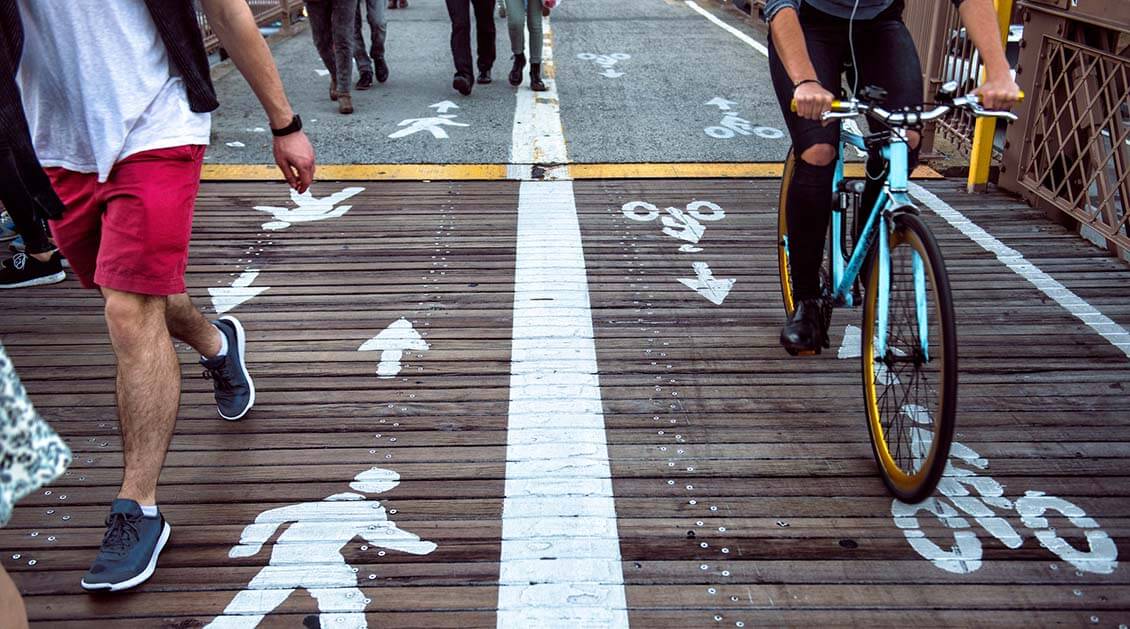If you’re a New Yorker who loves cycling, you’ve probably noticed some major changes in recent years.
The number of bike routes in the city has expanded significantly over the last decade, while the popular Citi Bike program has now deployed more than 12,000 bikes on city streets.
Additionally, the practice of commuting via bike has exploded in popularity. In 2005, roughly 170,000 New Yorkers rode to work every day; today, around 450,000 commute to work via bicycle.
In other words, we’ve seen unprecedented growth in both the number of city bike riders and the cycling infrastructure used to support their activity.
Given these developments, bicycle safety has become top priority for city and state officials — and a new program is making a substantial impact in reducing cycling injuries and deaths.
How New York is Making Cycling Safer
In order to help keep cyclists and pedestrians out of harm’s way, New York officials implemented “Vision Zero”, a program designed to reduce the risks associated with some of the city’s most dangerous streets.
One example: In 2015, Queens Boulevard (one of the streets with the highest numbers of accidents and injuries in the area) was redesigned to make it safer for pedestrians and cyclists.
Two traffic lanes were converted into bike lanes, crosswalks and medians were added and speed limits were lowered. In the three years since the changes were implemented, there has not been a single reported fatality along that stretch of Queens Boulevard.
As part of Vision Zero, New York City officials have been working hard to accommodate the recent surge in daily bike riding. The city now has 738 kilometers of protected bike lanes, making it easier and safer for cyclists to navigate New York streets (though adding additional bike lanes can be counterproductive if proper design principles aren’t followed).
Additionally, heightened enforcement activity has helped keep collisions down. The number of citations written for offenses such as failure to yield to a pedestrian or speeding have increased by 40-percent since Vision Zero was implemented.
New York Bicycle Safety by the Numbers
According to the New York Department of Transportation, there were 24 bicycling fatalities in 2017, citywide. There were another 4,397 injuries suffered by city cyclists over the same time.
While even one death is too many, New York has come a long way in terms of street safety. The city has seen a 44-percent drop in pedestrian deaths since 2014 and a 27-percent overall decline in traffic fatalities.
These numbers were enough to cause Mayor Bill DeBlasio to quip that the last time New York streets were this safe, “people were traveling by horse and buggy.”
On the other hand, statistics do not tell the whole story. When you drill down on the actual number of cycling fatalities in 2017 – you find that there were 23 in the City of New York in 2017. In 2016 there were 18 fatalities. So how have the numbers gone down? The answer can be found by considering the significant increase of bikes traveling in the City of New York as compared with fatalities suffered, and you have a percentage of fatalities of the population of riders going down.
This is hardly an achievement meriting a victory dance by the City of New York. In fact the increase of deaths has been calculated as a 44 percent increase in total cycling fatalities when comparing 2017 to 2016. https://nyc.streetsblog.org/2017/12/19/cyclist-deaths-up-44-percent-as-mayor-de-blasio-targets-e-bikes/
We welcome your legal questions for topically relevant articles in the future. Feel free to compose a question – it may be addressed in future articles. Email Question
Free Case Evaluation
Fill Out The Form Below To Find Out If You Have A Case.
Thank you for contacting us. One of our colleagues will get back to you shortly.



